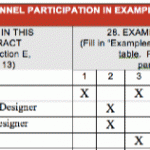For an organization of any size, its brand is one of its most critical business assets. Yet, while the word “branding” officially has entered the buzzwords category, the strategic and systematic act of branding is often overlooked. Organizations fail to make it a part of their business strategy, and therefore they are unable to take full advantage of what an effective brand can do for the success of their business.
Why invest time and resources to develop a solid brand?
- It helps you become a leader in your market, it keeps you on your customers’ radar, and it makes you the #1 choice when purchasing decisions are being made. It puts you in control.
- A strong brand makes it easy for your customers to buy. Customer indifference means a never-ending uphill battle to have your customers select you over your competitors. Customer loyalty means more streamlined communications and business development efforts and shorter sales cycles.
- If employees feel indifferent about the organization they work for, they are not motivated to do better and they are not committed to stay long term. A strong brand helps you hire and retain the best talent.
Strong brands are sustainable; they are for the long haul. It’s important to remember that branding and brand management is an ongoing process, not a quick fix.
So how do you create a brand that realizes your organization’s full potential? The answer is in doing your homework.
Step 1: Strategy First
Your brand is instrumental to your organization’s success, and therefore your brand strategy should clearly align with your business strategy. If you understand your business, creating your brand, its values, its personality and its position comes naturally.
Homework: What do you do best? A clear focus will position you to appeal to more, and the right, people – we all know that you can’t be good at everything. Define what you are great at (not “good” – “great”) and build your brand and marketing strategy around those core capabilities.
Step 2: Focus and Relevance
Being very clear and focused about your audience is also critical. The narrower your focus, the easier it is to have a meaningful conversation and build a stronger connection with your most qualified audiences. Take the time to learn about what motivates your audiences and what’s important to them.
Homework: Is your brand relevant to the very narrow target audience that you are trying to reach? Does your message appeal to the right people? Or is it too broad, diluted and unfocused? Identify the exact solution you bring to your audiences and where your product or service can be positioned as the only solution – then build your message around that. Now, that’s compelling!
Step 3: Brand Platform
By starting with a solid brand platform that describes what your brand stands for, its personality and its unique position, you define the desired perception of your brand for your audiences. The brand platform includes:
Brand promise. The pledge you make to your customers about the experience they will have by doing business with you.
Brand values. Every business decision related to your brand should align with its values. The brand values are the code by which your brand lives. Every day.
Brand personality. Like a person, your brand must have unique and defining characteristics that compel your audiences to get to know you and build a lasting relationship with your organization.
Brand positioning. This is the space that you want to own in your audience’s mind. If you’ve done your homework for steps 1 and 2, then you already know what it is about your offer that motivates your audiences to take action. Your brand position is about clearly communicating this competitive advantage to your core target audience in a way that makes it clear that there’s no brand but yours that can satisfy their needs.
Homework: What promise are you making to your audiences? Does your positioning set you apart? Do your brand values and your personality resonate well with those you are trying to reach; do they help cultivate loyalty and lasting relationships? And this is critical: Is all of the above clearly and consistently communicated at every audience touchpoint, making it easy to differentiate your brand from the rest of the pack?
Step 4: Compelling Brand Story
Everybody likes a good story. Stories are entertaining, inspiring, engaging and, above all, human; they connect people to people and organizations to their prospective and existing customers and employees.
Homework: Every company has a story. This is not your elevator speech; this is a story of who you are, what you do and, most importantly, why it matters. What is your culture? What attracts customers and employees to your organization and why do they stay? What’s your story?
Step 5: Unparalleled Brand Experience
Your audiences experience your business through your brand. A strong brand, properly and consistently executed across all applications and media, leaves positive impressions at every audience touchpoint. These individual experiences form a perception of your brand in the marketplace and become your organization’s reputation.
Homework: Does your brand experience measure up? Put yourself in the driver’s seat and experience your website, your marketing collateral, your reception area, your outgoing voice mail message. How do you feel? Impressed? Motivated? Disappointed?
Ida Cheinman is Principal & Creative Director of Substance151 – a Baltimore-based brand design + strategy firm specializing in branding and marketing communications for the professional services industries. She can be reached at [email protected].





Speak Your Mind